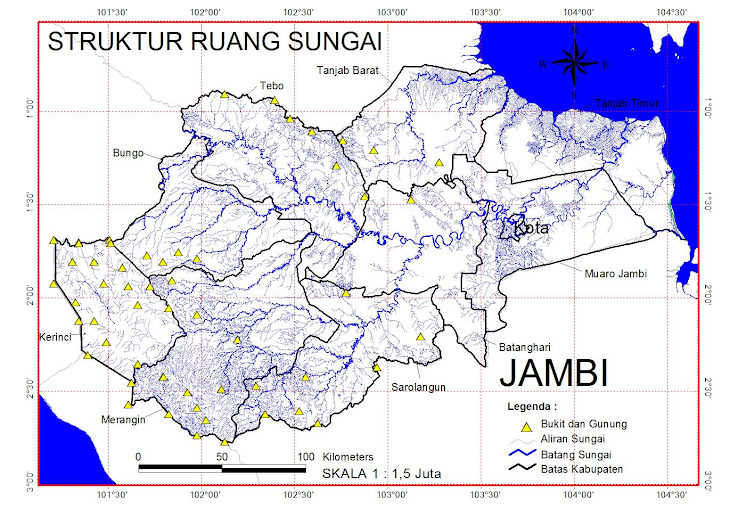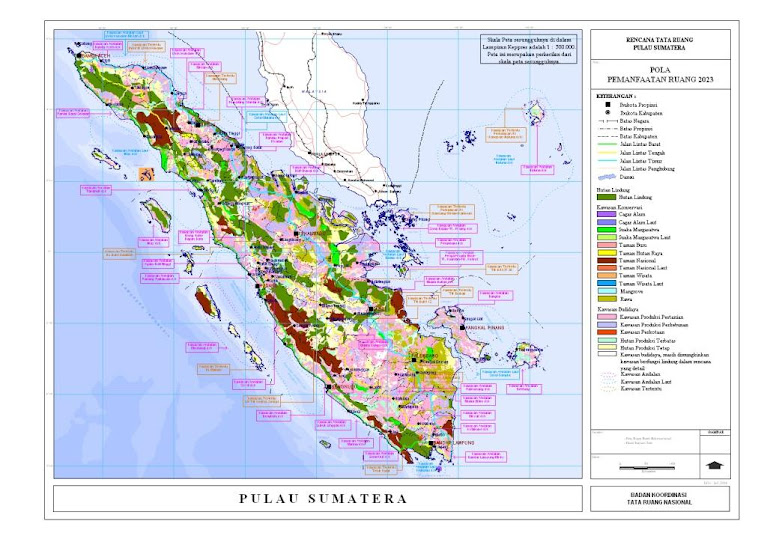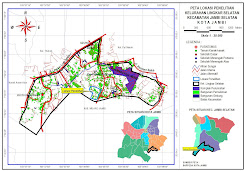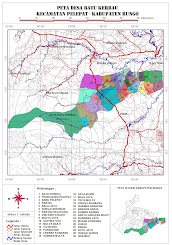Apollo 11 Saturn V rollouts out to the pad
T- 12 days, 16 hours, 17 minutes...
July 1 - July 8, 1969
NASA announces that the Goldstone Tracking Station, recovery ship USS Hornet, Mission Control Houston and the global network of tracking stations were ready to support the Apollo 11 lunar mission, now just over two weeks away.
At the site of the final preparations, astronauts Neil A. Armstrong, Michael Collins and Buzz Aldrin continued their training and rehearsals for their mission to the Moon. All across central Florida, businesses reported the first stockings of fresh food supplies and liquor for the thousands of expected visitors.
On Launch Complex 39A, the Apollo-Saturn V launch vehicle completed its last full dress simulation of the terminal countdown and liftoff with no major problems reported. In Washington, the U.S. Postmaster Winton M. Blount announced that a new 10-cent Airmail stamp would be released in honor of the Apollo 11 mission. The original die would be carried aboard the Command Module Columbia and the first envelope “stamped” by the Lunar crew when they touched down aboard the “Eagle”.
CBS television released its plan for 24-hour a day coverage of the mission beginning in the dawn hours before the launch. At the same time, CBS News officials revealed a plan to transmit regular satellite broadcasts of news stories to Japan and Australia, beginning with the Apollo launch.
And NASA announced that amateur astronomer and National Geographic Society cartographer David Moore was selected as one member of a group that would attempt to visually sight the Apollo 11 spacecraft on its way to the Moon. Moore said that they would use the spacecraft’s rocket thruster firings for telltale signs of bright flashes of light in the summer night sky.
--------------------
Nixon had speech prepared if Apollo 11 mission failed
WASHINGTON (AP) - When man first landed on the moon 30 years ago, President Nixon had a speech all ready in case man could not get off again.
A contingency statement was prepared for Nixon, an eerie, poignant tribute that he would deliver while the astronauts were still alive but when there was no longer any hope for them.
“Fate has ordained that the men who went to the moon to explore in peace will stay on the moon to rest in peace,” says the statement, incorporated in a memo entitled “In Event of Moon Disaster.”
The memo is dated July 18, 1969, two days before the moon landing.
Nixon never had to act on it. Neil Armstrong and Edwin Aldrin made it safely off the moon, back into the command module with Michael Collins, and home. The words were drafted by William Safire, then a Nixon speechwriter and now a columnist for The New York Times.
The memo ended up in the National Archives and was reported this week by the Los Angeles Times. Safire did not return a phone call. According to the memo, in the event of disaster Nixon was advised to call each of the “widows-to-be” before reading the statement to the nation. Then NASA would cut off communication with the stranded astronauts and a clergyman would “adopt the same procedure as a burial at sea, commending their souls to ‘the deepest of the deep,’ concluding with the Lord’s Prayer.”
It has long been rumored that astronauts landing on the moon carried suicide capsules in case their return became impossible.
The Apollo 11 astronauts spent more than 21 hours on the moon, watched by millions around the world on TV. Nixon had the happy duty of putting in a phone call to them while they stood on the dusty lunar surface. But had something gone terribly wrong, these words were prepared:
“Fate has ordained that the men who went to the moon to explore in peace will stay on the moon to rest in peace. These brave men, Neil Armstrong and Edwin Aldrin, know that there is no hope for their recovery. But they also know that there is hope for mankind in their sacrifice. These two men are laying down their lives in mankind’s most noble goal: the search for truth and understanding. They will be mourned by their families and friends; they will be mourned by their nation; they will be mourned by the people of the world; they will be mourned by a Mother Earth that dared send two of her sons into the unknown.
“In their exploration, they stirred the people of the world to feel as one; in their sacrifice, they bind more tightly the brotherhood of man. In ancient days, men looked at stars and saw their heroes in the constellations. In modern times, we do much the same, but our heroes are epic men of flesh and blood.
“Others will follow, and surely find their way home. Man’s search will not be denied. But these men were the first, and they will remain the foremost in our hearts. For every human being who looks up at the moon in the nights to come will know that there is some corner of another world that is forever mankind.”
-----------------------
T- 9 days, 8 hours, 17 minutes...
July 10, 1969, 8:00pm EDT
It is 8:00pm Eastern Daylight Time; In Firing Room No. 1 at NASA’s Kennedy Space Center, Florida the master countdown clock begins to count down towards zero. The mission: launch Apollo 11 to the Moon.
The time at the start was T-Minus 28 hours before the ignition command would be sent to the Saturn V S-IC stage. The countdown would be stopped repeatedly during the next six days with built in holds. They would be no major problems in preparing the huge rocket for flight. For some 500 flight controllers at the launch control center, the call to stations came at the same time the call went out to the Mission Control Houston team to man their consoles.
Meanwhile, at Kennedy Space Center, Armstrong, Aldrin, and Collins completed their final medical examinations. The verdict: fit to fly America to the Moon. Even now, some six days before liftoff, crowds began to gather on the beaches and coastlines near the launching site. NASA Public Affairs Office had issued press accreditation to 3,000 reporters and journalists from all around the world. Their mission- to tell the story of how America would keep its 1961 pledge: land a man on the Moon and return him to Earth.
The results-success or failure -would be revealed before the whole watching world. In magazines around the globe coverage of Apollo 11 began with cover illustrations of the astronauts and drawings of their mission plan. Newspapers also began preparations for special supplements, with the actual Moon landing set for a Sunday.
Said the New York Times on July 13th: “This is the week of the Moon...”
--------------------------
T- 7 days, 16 hours, 17 minutes...
July 13, 1969
In Soviet-central Asia, a unmanned spacecraft rockets aloft from the Russian Cosmodrome at Baikonur. Radio Moscow announces to a stunned world that the craft, a lunar space probe, has entered selenocentric space near the Moon.
With the Apollo 11 space vehicle just days away from heading towards the Moon to land the first humans, are the Russians about to stage a bold upset? The Soviet Union announces the craft’s mission as “further scientific studies of the Moon and near lunar space.” Arrival time was announced as late July 16th -- Apollo 11’s blastoff day.
As thousands begin to converge upon central Florida for the historic Apollo launch, speculation on the craft -- called Luna XV -- and its true mission runs rampant. Rumors sweep through Washington that the ship will drop down from lunar orbit July 17th and land upon the Moon, gather a sample by means of a robot, and then blast-off to return the craft and the Moon dust back to Russia.
If the mission is attempted, the Russians might be able to claim victory in the race to retrieve a part of the Moon -- blunting Apollo’s expedition. The Russians refuse requests for additional data on Luna’s true mission.
At Cape Kennedy, the Saturn V continues smoothly through its final hours as the clock ticks towards ignition of the 40 story tall booster just past 9:32 am EDT on July 16th. But who will reach the Moon first? The countdown races on...
--------------------------------------------------------------
T- 6 days, 16 hours, 17 minutes...
July 14, 1969
The commemorative plaque prior to installation on the Lunar Lander leg.
In a sealed room the three Americans ready to voyage to the Moon bid their countrymen farewell. On live television, astronauts Neil Armstrong, Edwin Aldrin, and Michael Collins speak to the news media for the last time before their blastoff. NASA isn’t taking any chances on a last-minute cough or cold plaguing the flyers. The press are kept in a separate building 15 miles away from the crew.
“After a decade of planning and hard work, we are willing and ready to attempt to achieve our national goal,” Armstrong tells the watching world at midday. Television networks around the country break in to regular programming to bring the crew’s words live. Armstrong said that fear was not unknown to himself and his crew. But he added “as a crew. ..we have no fear of launching out on this expedition.”
That night, the New York Times released a poll showing the public supported lunar flights by a thin 51 to 41%. In addition, however, 56% of adults surveyed were against NASA’s annual 4 billion budget. Only 37% favored it...
 Final Press Conference
Final Press Conference
T- 5 days, 16 hours, 17 minutes...
July 15, 1969
Now as dawn breaks over central Florida, hundreds of thousands jam the beaches, roads, hotels and restaurants near the Kennedy Space Center. In the darkness, searchlights played through the night on the mammoth booster - the heaviest Saturn V ever built, and the biggest object ever to be sent off of the Earth. Some 3,000 accredited journalists and 5,000 special guests arrive in the area. Former President Lyndon Baines Johnson and Vice-President Spiro Agnew head up the official U.S. delegation, which includes nearly every member of Congress. Motels in nearby Brevard County have been sold out for months, in some cases more than a year in advance when the launching date was only a guess.
Newspapers report that even a day before launch, some restaurants have already run out of food. As darkness falls at the Kennedy Space Center, Armstrong, Aldrin, and Collins gather around the dinner table for their last evening meal before launch.
Buzz enjoying steak dinner on the eve of launch.
Joining them at table are Donald K. “Deke” Slayton, chief of the Astronaut Office at the Houston Manned Spacecraft Center, plus astronauts Wally Schirra, Frank Borman, T.K. Mattingly, and Jim McDivitt. Among the guests is NASA Administrator Thomas Paine.
As dinner ends, Paine takes Armstrong aside and makes an astonishing statement. If anything happens that makes the landing impossible, Paine orders the crew not to take any risks and instead return to Earth. He pledges that for the first time in space history he would insert the crew back into the flight schedule and give them command of Apollo 12. By early evening the astronauts were asleep, but out on Pad 39A work was continuing in readying their rocket. The astronaut back-up crew of Jim Lovell, T.K. Mattingly, and Fred Haise boarded the Command Module Columbia to conduct communication checks with the Mission Control Center in Houston.
Newspapers now hit the stands with launch day special editions. Radio and television stations now blanket their coverage of Apollo. Walter Cronkite will rise well before dawn July 16th to start CBS News coverage of the flight. A sign on one motel near the Cape tells the story: “We’ve got GO fever!!!” it says. Says another: “Godspeed Apollo 11”.
Throughout the night people gather for the spectacle about to unfold. More than a million now jam the roadways near the rocket complex. The crew sleeps through the night. When they awake, it will be July 16, 1969: launch day for Apollo 11 and the voyage into history...
The mighty rocket awaits it's morning launch to the moon.
AMERICA LEAVES FOR THE MOON
July 16, 1969, 9:32am EDT
T- 4 days, 6 hours, 45 minutes
(until man sets foot on the Moon)
It is before dawn on the eastern coast of Florida. Throughout the night radio and television reports link the American nation and the world with a tiny strip of land on the Florida coast. There high atop a liquid rocket three humans from middle America were to be hurtled into space this day on the most unusual undertaking in the history of exploration: voyage to the Moon and land upon it. It has been 11 years since the Space Age was born. It has been eight years since the 35th President of the United States, John Fitzgerald Kennedy, set the lunar landing as a national goal of the United States of America.
Now on this date everyone the world over will get to see if that boast can be made real. The countdown is at T-5 hours, 32 minutes and counting. This is launch day for the United States’ 21st manned space mission: Apollo 11, the spacecraft known as Columbia and Eagle, aboard Saturn V no. AS-506. ..All systems are GO. ...and you are there to witness the event --
4:00am EDT -
Astronaut Donald K. “Deke” Slayton enters the crew quarters at the Operations and Checkout Building at Kennedy Space Center. Outside in the pre-dawn darkness it is pitch black except for one object glowing on the horizon: searchlights play on the gigantic Saturn V.
4:15am EDT -
Slayton awakens each Apollo 11 astronaut: Neil Alden Armstrong, Edwin Buzz Aldrin, and Michael Collins. The crew showers and shaves, then moves to the nearby exercise room. There they are measured, weighed and given their final examinations.
Then it was time for breakfast. The astronauts set down to steak, scrambled eggs, white-bread toast, orange juice and coffee. While the crew ate, Slayton took a call from the launch pad. Back-up crew member Fred Haise was in the white room outside Columbia. Haise reported there were no problems with either rocket or spacecraft.
From breakfast the crew moved to the suit room. There suit technician Joe Schmitt helped the three astronauts don their bulky pressure suits. Armstrong and Aldrin’s suits were the first designed for Moonwalking, and sported gold helmet visors. The visors, however were inside the Lunar Module Eagle out atop the waiting Saturn.
Armstrong getting suited up.
6:27am EDT -
Armstrong, Aldrin and Collins along with Deke Slayton leave the Operations and Checkout building and emerge onto the walkway to enter their transfer van and head to Saturn V. Over 100 photographers and press are there to catch a glimpse of the flyers. This marks the public’s last chance to see the crew before they leave for the Moon.
The van turns and heads out to Launch Complex 39A in the darkness using a special traffic lane set aside for them. All along the adjacent roads thousands of cars are already backed up in traffic.The trip to the pad takes 24 minutes.
Now the CBS News television network comes on live, the first U.S. broadcast outlet to go live this day. CBS anchorman Walter Cronkite narrates taped footage of the crew’s walkout. “No matter where you are,” Cronkite says, “you will remember this day: the day Man left for the Moon.” The sun now is rising over the Kennedy Space Center.
At the pad, Armstrong is first out of the van, followed by Aldrin and Collins. They enter the elevator at the base of the pad and ride to Service Arm 9 at the 320 foot level. The crew walks across the swing arm to the entrance to the white room.
Walking across the gantry to the Saturn V.
There pad technician Guenter Wendt is waiting for them with a gift- a mounted trout! Following the “exchange” of the gift (Wendt actually takes it back with him), the crew grasps an overhead rail mounted inside the capsule’s hatch and board Columbia. Armstrong crosses the sill first and settles into his left-hand couch. Next is Collins, who would normally occupy the center seat but for launch moves over to the right. Last is Aldrin. Ten minutes after arriving, Wendt’s crew starts to strap the astronauts into place.
A fourth astronaut- Fred Haise, now crawls out of the craft and bids the astronauts good-bye. Wendt closes the hatch, latches it and the boost protective cover on its exterior. For the next 30 minutes the Command ship is tested for leakage. There is none. Wendt signals his crew it’s time to leave. And they do. Armstrong, Aldrin and Collins are now alone atop pad 39A.
For the next hour and a half the astronauts check out their booster and pair of spaceships. All is well with the duo. Test conductor Norm Carlson puts the big Saturn through a series of power transfer tests, and at T-15 minutes the spacecraft go on internal power.
At T-5 minutes Armstrong reports the crew access arm where they boarded Columbia has now retracted.
At T-50 seconds all three stages of the rocket are pressurized. The other two television networks are on live, as is nearly every radio station in America. They hear the voice of Launch Control Commentator Jack King count the last seconds. And then, at T-8.9 seconds, the firing command enters Saturn V’s first stage. And the flight to the Moon begins. ..it is 9:32 am EDT July 16, 1969.
9:32am EDT -
Ignition view from the launch tower.
“Lift-off. ..we have lift-off, lift-off on Apollo 11!” cries Jack King from the launch control center. Fire and smoke have erupted from the bottom of the launch pad as the countdown reaches zero. Columns of flame rise on either side of the Saturn V. At the press and V.I.P. viewings sites, the spectacle unfolds in silence. From three miles away sound waves have not yet reached the viewers. But on television and radio microphones capture the thundering sound of the liquid engines as they roar to full thrust- 7.5 million pounds unleashed.
Now, slowly and majestically Saturn V rises into the air above the pad, with the great five F-1 rocket engines steering the booster away from the launch tower to avoid a collision. It is the heaviest and biggest object ever to leave the Earth, and it does so now riding a tail of flame 1,000 feet long. As the bottom of the F-1 engines clear the top of the hammerhead crane on the tower, the call goes out “tower clear!” Control of the mission now passes seamlessly to the Manned Space Center in Houston, Texas.
Inside Columbia Neil Armstrong follows the rocket’s progress carefully. He would later report that the Saturn was a series of vibrations rather than loud noise-with the great booster steering itself into the sky in a series of small, jerky movements. For the first 450 feet of the flight the rocket was vertical. Then it pitches over into a tilt and roll program to line up the rocket’s center of mass with the thrusting engines. The guidance computer inside the Instrument Unit holds Saturn in a tilt arrest profile for the remainder of the first stage’s burn. The computer is compensating for the wind conditions average for late July.
Heading skyward to make the journey from the Earth to the Moon.
From the observation stands the sound now hits the viewers. It is rolling, rhythmic sound that rattles pocket change and makes speech difficult. The crowd is on its feet now cheering, and all along the beaches millions roar their approval-Go! At one minute five seconds into the flight Saturn V hits the Sound Barrier and goes supersonic- from zero to 760 MPH in 65 seconds.
Stage one fires perfectly and drops away, followed some six minutes later by stage two. Stage three fires briefly to insert the rocket unit and the two spacecraft into a parking Earth orbit. At cut-off, it has been just over 11 minutes since lift-off.
12:02pm EDT -
After a two hour and twenty-one minute checkout in orbit, the third stage fires up for about six more minutes. Apollo 11 becomes the third manned craft to leave Earth orbit.
12:52pm EDT -
After the engine shuts down, Mike Collins takes control of Columbia. Explosive bolts detonate and four panels holding the Command and Service Modules to the top of the third stage fall away. Using his hand controls, Collins fires thrusters around the side of the Service Module, and Columbia moves out and away from the rocket, then turns around and doubles back. A probe in the nose of Columbia links with a receptacle atop the Lunar Module Eagle, nestled inside of the third stage rocket.
When latched together, Collins slowly pulls Eagle free of the now-spent rocket and the docked Apollo 11 spacecraft begin their three day voyage to the Moon. It has been four and a half hours now since lift-off.
Sumber : http://www.facebook.com/note.php?note_id=411305207354&id=54971236771&ref=mf


























